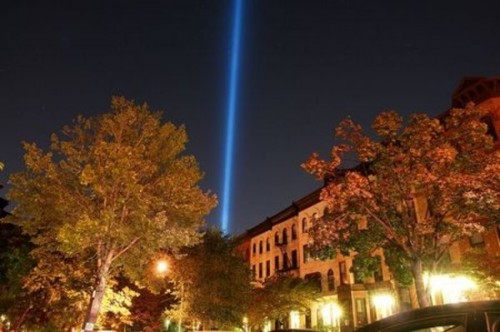 Unbelievably, the tenth anniversary of the September 11, 2001 attacks is tomorrow. WNYC radio has been on all morning with its special “Living 9/11” coverage. The voices of family members who lost loved ones, survivors and witnesses is forcing me to re-live the day. Yet, I can’t turn it off.
Unbelievably, the tenth anniversary of the September 11, 2001 attacks is tomorrow. WNYC radio has been on all morning with its special “Living 9/11” coverage. The voices of family members who lost loved ones, survivors and witnesses is forcing me to re-live the day. Yet, I can’t turn it off.
In my quest to understand how people are feeling about the anniversary, I contacted clergy in the Park Slope area to see how they are approaching the anniversary of an event that changed New York City and the nation, and surely changed New Yorkers.
“It strikes me that we’re still in a case of low-level shock, and we still haven’t faced all the meaning of what we experienced,” Reverend Daniel Meeter of Old First Dutch Reformed Church wrote via E-mail.
Since the anniversary falls on a Sunday, the church will likely be filled with parishioners who, like Rev. Meeter, are still grappling with the enormity of that sunny, yet terrible September day.
“We are having special prayers and testimonies in our morning services,” he wrote. “Then we’re opening the sanctuary for prayer and meditation and hanging up the prayer sheets which people wrote the prayers on ten years ago.”
Indeed, in the days and weeks after 9/11, Old First opened its doors to the general public for prayer vigils and silent meditation. I remember those prayer sheets. They were white bed sheets, which men, women and children were invited to write or draw on. Their words and pictures were displayed in the church’s vestibule for months, a hanging vigil for all of those who were lost in the attacks.
On the first anniversary of 9/11, I remember spending my morning in the church listening to a program of classical music performed by local musicians.
Tomorrow afternoon at 5 p.m., Rev. Meeter will join Rabbi Andy Bachman of Congregation Beth Elohim (CBE) at his synagogue, on Eighth Avenue at Garfield Place, for an interfaith service open to the entire community. Brooklyn Conservatory’s Community Orchestra and Chorale, the CBE Singers and the synagogue’s cantor, Joshua Breitzer will be on the program. At the service, Rabbi Bachman will deliver a sermon and the memorial will conclude with a group singing of “America the Beautiful.”
Rabbi Ellen Lippmann of Kolot Chayeinu will organize a different commemoration for the tenth anniversary of 9/11. The Eighth Annual Children of Abraham Peace Walk will begin at 2 p.m. on September 11. This walk is for Jews, Christians, Muslims and “all people who want to remember those who died on 9/11 and commemorate the spirit of friendship that supported so many thereafter” will commence at a the Dawood Mosque in Brooklyn Heights (143 State Street), cross the Brooklyn Bridge and conclude at Charlotte’s Place, a community center in lower Manhattan.
Perhaps it’s appropriate that Rabbi Lippmann’s most vivid recollection of Park Slope in the days after 9/11 was a candlelight vigil down Seventh Avenue.
“It was a Friday evening a few days after 9/11, and we were in Sabbath services,” she said. “We left, bringing candles, and joined what turned out to be a sea of people with candles all along Seventh Avenue as far as the eye could see, heading for the fire house on Union Street, I think, offering our presence in comfort for their many losses. What sorrow! What impact! What a sight!”
Also on September 11, the Brooklyn Conservatory of Music, on Seventh Avenue between Lincoln and St. Johns places, will hold a day-long 9/11 commemoration and the Brooklyn Art Song Societywill perform at noon. At 2 p.m., Ron Jackson will play guitar and recite poetry at the Community Bookstore. At 3 p.m., BaroQue Across the River and Dancewave will bring music and dance to the Conservatory.
In anticipation of the anniversary, I asked Rabbi Bachman what he best remembers about the aftermath of the tragedy ten years ago.
“As I’ve reflected on these last ten years,” Rabbi Bachman said. “I’ve been most impressed with stories of incredibly generous humanity that was expressed that day and in the following weeks and months—as if a hardened city was traumatized into softening its exterior, if only temporarily.”
